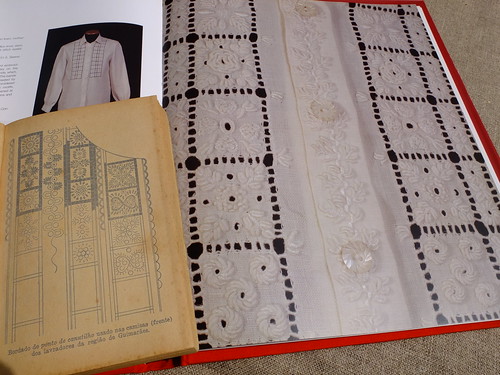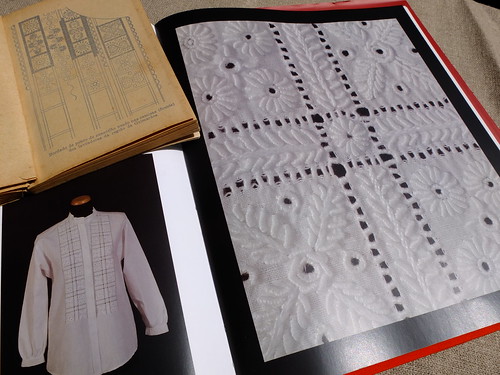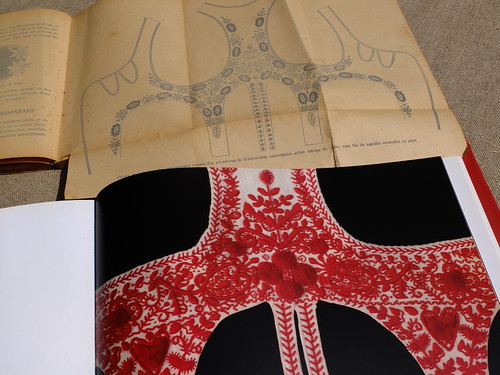Many years ago the stitches that are known today as Guimarães embroidery were used to embellish the rural woman’s blouse and working tailed waistcoats and the shirt of the farm worker (even richer than woman’s).
The shirts were worked on thick coarse linen, profusely using bullion knot stitch in quite an original manner. White was the dominant color but in the shirt-front red was also used in some details. The same applied to the tailed waistcoat, on which red, blue, or black were used separately.
 |
| Farm worker shirt. |
This was truly a popular type of embroidery and by saying “popular” what I really mean to say is that this type of embroidery was made by the people, for the people - do povo para o povo.
Experts argue that this “popular” embroidery is the most original regional embroidery in Portugal. The shirts from the peasants “give us the impression of something absolutely different” from any other Portuguese or other countries’ regional embroideries.
 |
| Rural woman's blouse |
Maria Clementina found the right words to describe it:
“of such graceful design and so beautifully embroidered that it could easily compete with a more aristocratic piece. Many peasant embroideries, made for personal use and not for sale, are so carefully worked as to be technically perfect. This works is done during the short intervals between their heavy labor in the fields and in the home, with the loving care bestowed on work destined to last several generations.”
 |
| Tailed Waistcoat. |
Today, Guimarães embroidery is used in tablecloths, valances, napkins, doilies, sweetheart’s handkerchiefs and many other pieces that embellish the home, and also in accessories for ladies and children. This work begun in the middle of the 20th century, adapting shirt’s motifs to house linen. Unlike the popular embroidery from which it stems, it is not made by the people, for the people, once it is executed by professional embroiderers. As it is very time consuming it became expensive, not accessible to all purses, ending to be a ”rich embroidery” ...
But we have good news… The interest in learning traditional stitches from Guimarães is growing and we hope that, soon, it will return to “the people’s” hands…
*In this post I've used four books on Portuguese embroidery - Traditional embroidery of Portugal; Guimarães Embroidery - a renewed tradition; Bordados e Rendas de Portugal; Embroidery and lace in the house linen of Entre Douro e Minho




is preaty!
ReplyDeleteI always wondered what type of handwork this was, thank you for the information--I'll be trying to track down those books!
ReplyDeleteQue trabalho belíssimo! Agradeço a oportunidade de conhecer um pouco mais sobre ele! Que preciosidade! Agora, fiquei curiosa para saber se, algo dele, chegou até nós, no Brasil, através dos primeiros colonizadores... Nosso bordado popular é bem mais simples... Posso , também estar falando bobagem pois, afinal, tenho pouco conhecimento do assunto. Obrigada, novamente!
ReplyDeleteUm abraço!
Egléa
Églea, que bom que gostou... Penso que este tipo de bordao é mais recente, posterior à colonização do Brasil. É muito difícil fazer a história do bordado popular, porque nada permanece para contar a história... Os tecidos eram usados e reutilizados até praticamente desaparecerem... Mas pelo que tenho estudado, foi exactamente na época dos descobrimentos que o bordado tradicional português em geral se foi "construindo", misturando todas as influências que vieram de todo o mundo, mas acima de tudo do Oriente....
ReplyDelete